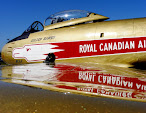http://www.youtube.com/
History of the M-1917 Bayonet
The M-1917 bayonet was developed originally for the British Pattern 1913 rifle and, like the later Pattern 1914 rifle, was adpoted for U.S. troops in World War I. The rifle backgound is covered on the Olive-Drab page on the M-1917 Enfield Rifle.
HISTORY OF WORLD WAR 1 : http://www.youtube.com/wat
The Pattern 1913 bayonet was only slightly modified (clearing hole added at stud slot), was redesignated the M-1917 Bayonet and given US markings when manufactured. Two cross grooves in the grips distinguish it from earlier bayonets of similar design. A large number of bayonets were acquired by the U.S. from the British production and were restamped with "US" markings. Remington and Winchester, the rifle contractors, started new U.S. production of the M-1917 bayonets in September 1917.
Description of the M-1917 Bayonet:
The blade and tang are forged in one piece and the guard and pommel are brazed in place forming one very strong unit. The pommel has a T-shaped slot to receive the bayonet lug from the firearm, which holds the bayonet on the rifle (or shotgun) along with the bayonet stud that fits into the crossguard hole. The spring loaded bayonet catch engages the bayonet lug on the rifle (or shotgun). The catch is released by pressing the thumb piece.
The blade is 16 1/2 inches in length with a cutting edge of almost 15 inches. The overall length of the M-1917 bayonet is 21 3/4 inches.
Left and right grips are mounted on the tang, between the pommel and guard, held by two screws. The grips are countersunk, to receive the nuts and the heads of the screws. Originally the grips were wood, but later production were black plastic.
MarkingS of M-1917 Bayonet:
Markings fall into two basic groups. First are bayonets that were manufactured for the British Government but redirected to the U.S. That group will be marked with a canceled British property mark, and there will be "US" stamped along with inspector's marks. On the reverse side should be British model number "1913" along with date and the maker's name.
The second group were manufactured by Winchester or Remington under U.S. Government contracts. The Ordnance flaming ball, the inspector's marks and the letters "US" will be stamped on one side while on the reverse is the US model model number "1917" along with the maker's name (Remington in the example, photo to the left). Unlike the M-1905 bayonets of the period, the bayonets are not serially numbered.
Beyond these basics, there were many variations over the years, along with M-1917 bayonet shipments to other countries or the manufacture of copies. Refer to more detailed books or websites for advanced information for collectors.
Use with Combat Shotguns:
Used in student riots of 1960's and Ohio Kent State. "Shotgun, 12-gage, Winchester Model 1200, Riot Type", from TM 9-1005-303-14.
The M-1917 bayonet was orphaned when, after World War I, the U.S. Army decided to keep the M-1903 Springfield as the standard service rifle. The M-1917 bayonet was not compatible with the Springfield so the large inventories had no immediate use. However, as combat shotguns were acquired for U.S. military applications, most were fitted with a bayonet attachment for the M-1917 (see above illustration of its use with the Winchester M1200). This extended the life of the M-1917 well into the second half of the 20th century. New production of M-1917s took place as late as 1969, based on the same pattern but with black plastic grips and inferior finish to the metal parts.
Differences Between M-1905 and M-1917 Bayonet
The general size and shape of the M-1905 and M-1917 bayonets are very similar. Here are a few distinguishing factors that may be helpful to ID the bayonet from photographs.
Characteristic M-1905 M-1917
Blade tip Spear Curved
Hand grips One screw Two screws
Hand grips Smaller, no grooves Larger, two cross grooves
Cross guard Longer Shorter
Scabbards for the M-1917 Bayonet:
The original Model of 1917 scabbard was made of leather, flesh side out, stitched up the inner side, and painted olive drab. There were sheet metal parts at the throat, and an M-1910 metal pistol belt hook. All metal parts were dark, finished by bluing.
During World War II, the leather scabbard was replaced by a new model, similar to the M3 olive drab fiberglass scabbard, standardized in 1941 for the M-1905 bayonets. Since the M-1917 bayonet was still in use for combat shotguns, in late 1944 additional scabbards were ordered from Beckwith Manufacturing, maker of the M3 and other scabbards such as the widely used M8A1. The slightly longer blade length of the M-1917 bayonet was handled using the same body as the M3 scabbard but with a longer metal throat. Compared to the M-1905, the tip of the blade of the M-1917 bayonet is of a different shape and a little thicker, sometimes resulting in scabbards damaged at the tip.
http://olive-drab.com/
https://www.google.ca/
I HAVE THIS BAYONET SO IF EITH PRESIDENT OBAMA OR GOVENOR ROMNEY NEED ONE, PLEASE JUST ASK
http://
Sir Richard
The Bayo-Hunter....
http://
The Bayonet Collecting Group
http://groups.yahoo.com/






No comments:
Post a Comment